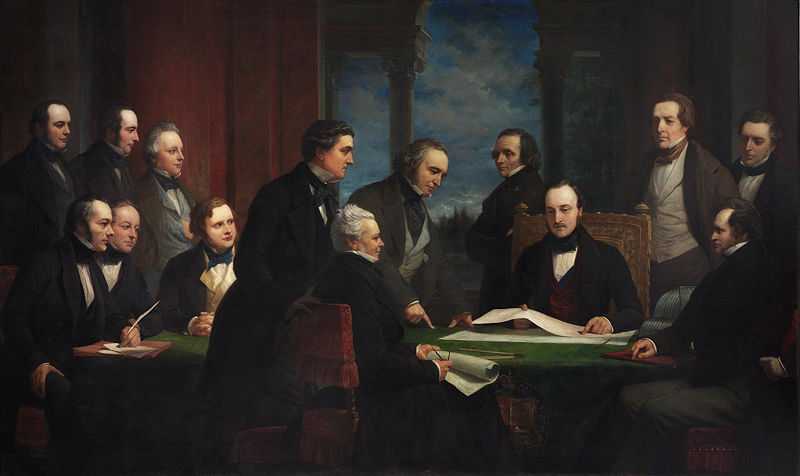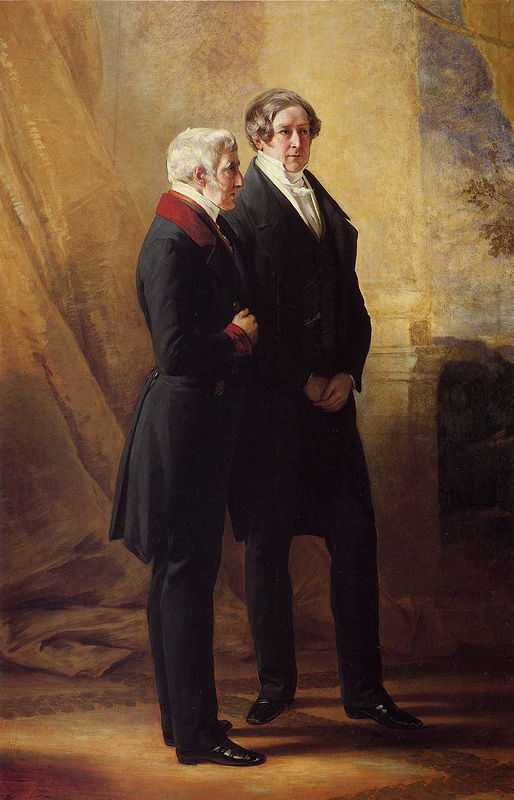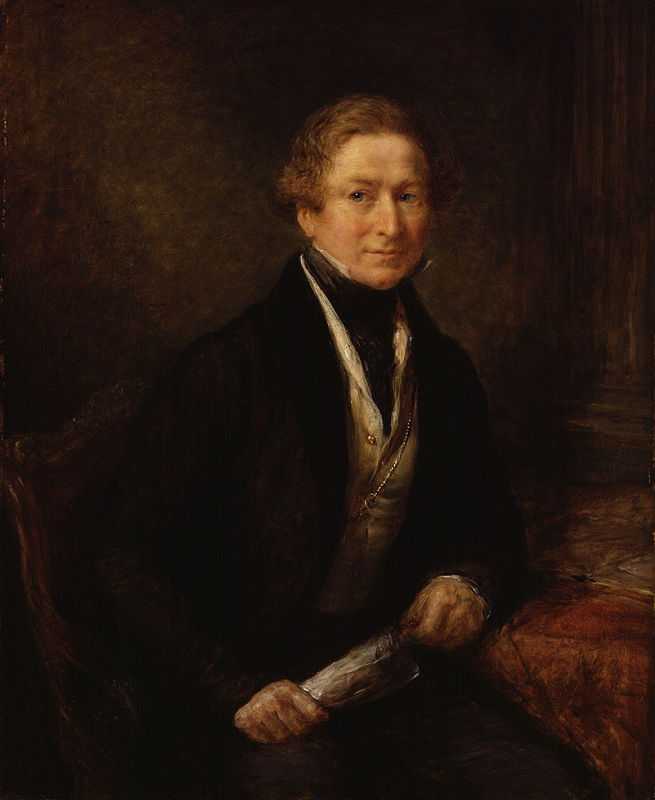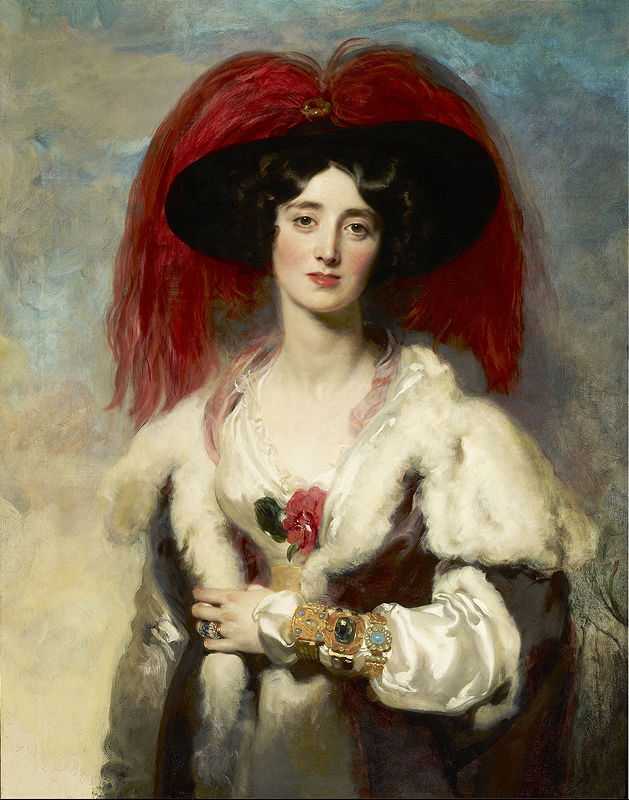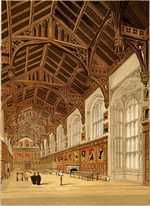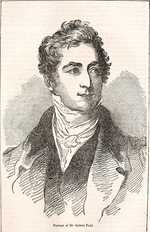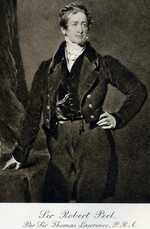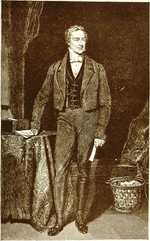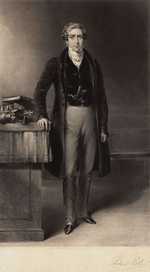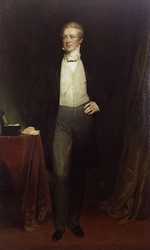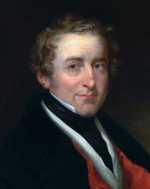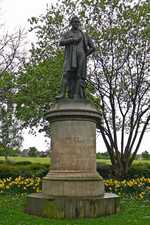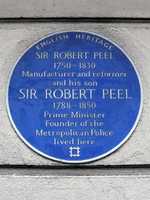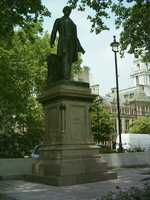1. Peel's Early Life
Robert Peel was born on 5th February 1788 in Bury, Lancashire.
He was one of eleven children to Sir Robert Peel, 1st Baronet of Drayton Manor, and Ellen Yates.
Peel's education
His father was a wealthy cotton manufacturer and politician who arranged for his son to be home schooled until the family moved to Drayton Manor in Staffordshire in 1798. Peel Snr was made a Baronet (the lowest hereditary honour awarded by the British Crown) in 1800, when Peel was 12.
It was in Staffordshire that the young Peel attended a school in Tamworth before going on to study at Harrow from 1800 to 1804. From Harrow he moved on to Christ Church college at Oxford University where he would earn a double first in Classics and Mathematics in 1808.
Peel enters Parliament
The following year Peel entered Lincoln's Inn as he looked to embark on a career as a barrister in the law.
However this was to change when his father arranged his entry in to Parliament via the 'rotten borough' of Cashel (ie a borough with a very low population whose votes could be controlled by wealthy landowners), Tipperary in Ireland where he was elected unopposed.
Peel was still just 21 years of age and in 1810 he made his maiden speech in the Commons, seconding the reply to the King’s speech following the opening of Parliament. The government of the day was headed up by Spencer Percival and in June 1810 Robert Peel was offered his first Government position as Under-Secretary of State for war and the colonies.
2. Early Career
Prime Minister Spencer Perceval was assassinated in the lobby of the House of Commons on 11 May 1812.
Spencer's assassin, John Bellingham, was convicted, sentenced and put to death within a week (modern commentators have raised questions as to the fairness of his trial).
These days, the manner of Perceval's death is more famous than his achievements as prime minister: he is the only PM to have been assassinated.
Secretary for Ireland
Lord Liverpool became Prime Minister and he appointed Peel as chief Secretary of Ireland, a notably difficult assignment but one he would hold until 1818.
Peel gave a hint of what was to later come in London when he founded a peace preservation force which would become the Royal Ulster Constabulary. Although not distinguishing between Protestant and Catholic in appointments open to both, he remained a firm opponent of the emancipation of Catholics.
Eventually the constant journeys back and forth between Dublin and London took their toll and Peel quit the position in 1818. The following year he was appointed Chairman of the Bullion Committee which enquired in to the return of the gold standard.
Home Secretary
In 1822 Robert Peel returned to government, taking up a position in the Cabinet as Home Secretary. Peel set about reforming a plethora of outdated criminal laws and introduced the Gaols Act of 1823, which saw payments for gaolers and education for those incarcerated.
The Metropolitan Police
However Peel believed reform needed to go beyond just criminal law and its aftermath and should also focus on improving prevention. To this end the Metropolitan Police force was founded in 1829 with an initial 1,000 officers who became known as Peelers or Bobbies, but who were not instantly popular with the people.
Peel left the Home Office for good in late 1830 after the fall of the Duke of Wellington’s government (though he had also resigned in 1827 when George Canning became Prime Minster. The resignation was prompted by Peel’s opposition to Catholic emancipation, though he was back in office in early 1828 following Canning’s death).
Emancipation U-turn
However with the threat of civil strife becoming ever more likely Peel would eventually concede the need for Catholic emancipation and helped Wellington see the Roman Catholic Relief Act pass through Parliament, a u-turn which saw him lose favour with many in his party.
It was a decision which also saw him resign and stand again for election at his parliamentary seat of Oxford University which he had first taken in 1817. The University was strongly Anglican and his opposition to Catholic emancipation was a major factor in his original election to the seat. Peel lost the by-election he had forced but would become the MP for Tamworth in 1830, the same year he inherited his father’s baronetcy.
3. Prime Minister and Repeal of the Corn Laws
In opposition Sir Robert Peel allied himself with the moderates in the Tory party.
The moderates were pragmatic: while willing to consider parliamentary reform they also wished to conserve what they felt was the best method of government for the country.
First stint as PM
After being out of government for four years, Peel took his first stint as Prime Minister in 1834, but it was to be short lived. Peel led a minority government and found it an increasingly intolerable position and resigned from his office in 1835 after just four months.
During this time he assigned Wiliam Gladstone Junior Lordship of the Treasury.
However at the back end of 1834 he issued the Tamworth Manifesto, which spelled out the moderate Tory thinking at the time and was in essence a manifesto for an upcoming election in January 1835.
The manifesto remains significant as it is viewed as laying out the guiding ideas and principles upon which the modern Conservative party was established.
Second stint as PM
Sir Robert Peel’s Conservative party won a majority in the 1841 election and thus Peel began his second and more substantial term as Prime Minister.
Peel came to power at a time of economic recession and he made the bold decision to re-introduce an income tax to manage the budget deficit which had been mounting over the previous years.
In 1842, Peel introduced the important Mines Act which banned employing women and children to work down the mines. Similarly, the Factory Act of 1844 limited the number of hours women and children should have to work in factories, as well as setting basic standards of safety around factory machinery.
Maintaining his manifesto commitment to moderate reforms, 1844 saw the Railway Act in which minimum standards for passenger safety were established and prices affordable to poorer people were introduced to allow access to transport in order to get to work.
Repeal of the Corn Laws
Sir Robert Peel believed that free trade was crucial, not only in bringing increased prosperity to the factory owners, but also in providing more jobs for the working classes and lowering living costs.
The pivotal moment of his terms in high office was the repeal the Corn Laws which served to protect British agriculture.
The Corn Laws placed restrictions on the quantity of foreign grain which entered the country. By opening the market to more foreign grain, artificially high food prices would fall.
The repeal was prompted by the need to free up food for Ireland and avoid starvation brought on by the Irish potato famine. It would also ease pressure on the working classes, who were spending a large proportion of their salaries on food.
Yet landowners (thinking of their own pockets) were against the move and Peel did not have the support of many within his own party.
In 1846 Peel was successful in repealing the Corn Laws, but needed to depend on support from the opposition Whigs and Radicals to push it through with a majority of 98 votes.
4. Later Life and Legacy
Sir Robert Peel was not able to sit back and enjoy his Corn Law victory: his Irish Coercion Bill was defeated the very same night.
With his own party split he resigned as Prime Minister on 29 June 1846 (replaced by Lord John Russell) and would not serve in Government again.
However Peel continued to be a highly influential figure in British politics and was particularly supportive of free-trade motions and vocal against the protectionist tendencies of many of his fellow Tories.
Just four years after leaving office Sir Robert Peel was involved in a riding accident on Constitution Hill in London and died on 2nd July 1850 aged 62.
Legacy
Peel's legacy stands in the reforms he made to criminal law, the introduction of the first professional police force and free trade, as well as being seen as the founder of the modern day Conservative Party.
In the battle over the repeal of the Corn Laws he put what he saw as best for the national interest over his own political career. Today he is commemorated by statues across many parts of the country including Parliament Square in London and outside his birthplace in Bury.
Sir Robert Peel could be an autocratic administrator, but he was recognised as being an intelligent man who did not shy away from hard work. Although originally set against parliamentary reform he came to implement what many would see as liberal measures while in government.
In sum, Robert Peel was one of the most influential politicians of the 19th century alongside William Gladstone or the Duke of Wellington.
Peel and Queen Victoria
Peel was also a stubborn man, a trait which delayed his second stint as PM.
In 1839 the young Queen Victoria had to summon Peel to ask him to form a government after the collapse of the Whig administration led by Lord Melbourne.
When Peel asked for the removal of some of the Queen's attending ladies (who had connections to the Whigs) as a condition of becoming Prime Minister, she refused. This sparked what has become known as the Bedchamber Crisis. Peel refused to budge on this ground, presumably because he did not want all of the Queen's closest confidantes lobbying against his party, and the Whigs returned to power!
Victoria regretted her actions in later life, and indeed agreed to remove some of her ladies in waiting when Peel became Prime Minister two years later.
